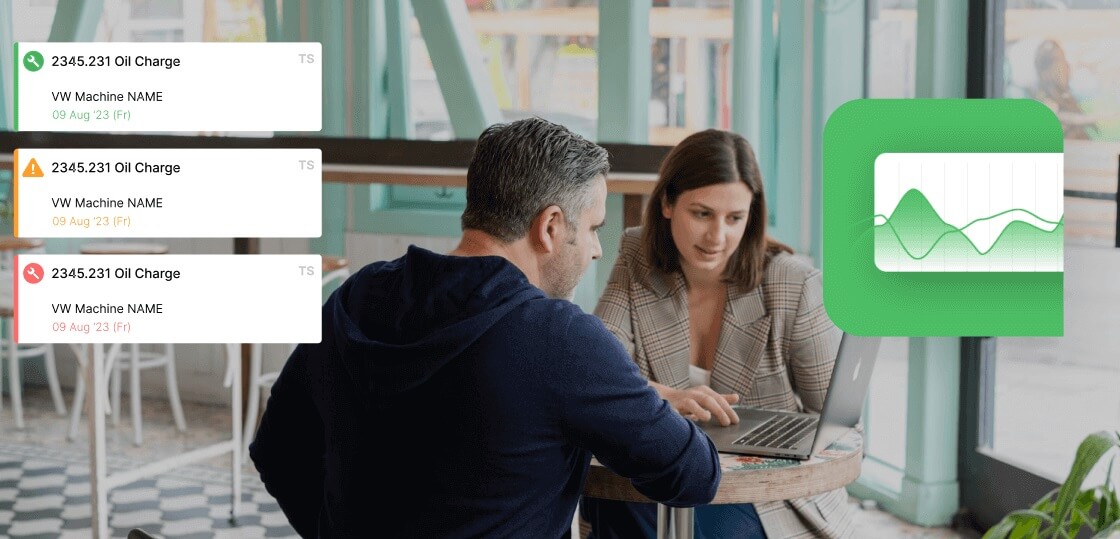
Emergency maintenance demands immediate action to fix unexpected equipment failures that threaten safety or cause costly downtime.
The primary aim of emergency maintenance is to resolve urgent issues that pose risks to occupants, property integrity, or essential systems operation.
The main goal of emergency maintenance is to restore safety, functionality, or asset integrity after addressing an immediate threat or damage.
Distinguish emergency maintenance from reactive and preventive maintenance to ensure emergency repairs are treated as a top priority.
Implementing proactive maintenance strategies like preventive and predictive maintenance reduces emergency incidents.
Tools like Fabrico CMMS simplify emergency response with features such as mobile-first work order tracking, QR code asset management, and downtime analysis.
Quick, organized responses to maintenance emergencies protect assets, ensure safety, and keep operations running smoothly.
Maintenance strategies are essential for organizations aiming to keep their equipment, machines, and facilities running efficiently.
A strong maintenance strategy not only helps prevent serious property damage but also reduces unplanned downtime and supports overall profitability. There are several approaches organizations can take, each with its own benefits.
Preventive maintenance, for example, involves regularly scheduled inspections and servicing of equipment to prevent total failure and costly breakdowns.
By addressing potential issues before they escalate, organizations can avoid expensive repairs and minimize downtime. On the other hand, reactive maintenance—sometimes called “run-to-failure”—means repairs are only performed after equipment has already failed.
Organizations adopt reactive maintenance when repairs are easy and asset failure does not create danger. While this approach may seem cost effective in the short term, it often leads to greater property damage and longer periods of downtime.
A more advanced strategy is predictive maintenance, which uses data and analytics to forecast when a piece of equipment is likely to fail. This allows maintenance teams to perform needed repairs just in time, preventing unexpected shutdowns and extending the life of critical assets.
In this article, we will explore how these maintenance strategies work together, with a special focus on emergency maintenance. Understanding and implementing the right mix of preventive, reactive, and predictive maintenance can help organizations protect their property, avoid unplanned downtime, and maximize the benefits of their maintenance program.
Emergency maintenance is unplanned, urgent maintenance that requires immediate attention to prevent serious property damage, safety hazards, or total equipment failure. Emergencies can happen unexpectedly, making them difficult to predict and prepare for.
Emergency maintenance addresses threats to safety, property, or operations that could jeopardize the organization. The severity of an emergency influences how quickly and extensively a response is needed. It’s a critical challenge for maintenance and operations managers because it disrupts workflows, increases costs, and risks safety.
Unlike routine or scheduled preventive maintenance, emergency maintenance happens without warning and demands rapid response. The key difference between emergency maintenance and reactive maintenance is the time sensitivity.
Emergency maintenance is important for any organization or company, regardless of industry, as all industries face unique challenges and risks that require immediate action to protect assets and reputation. Understanding how to manage it effectively is key to minimizing downtime and protecting your facility’s assets.
Not all maintenance requests are emergencies. Emergencies should be reported promptly to ensure a rapid response and minimize potential damage. Emergencies are typically brought to the attention of the maintenance team either by automated sensors or by human detection, ensuring that urgent issues are recognized quickly.
Here’s how to tell the difference:
Emergency maintenance requests are given the highest priority and require immediate action — examples include gas leaks, burst pipes, electrical fires, or critical machine breakdowns.
Urgent maintenance can wait until normal business hours without risk to safety or major damage — like a clogged drain or minor HVAC issues.
Routine maintenance is planned and scheduled to prevent failures.
In property management, recognizing emergencies within a specific unit can impact response time and cost. The physical site of the emergency is also important for safety and effective response planning.
Knowing this distinction helps your team allocate resources efficiently and avoid unnecessary overtime costs.
Maintenance teams often encounter a range of challenges when responding to emergency maintenance situations. One of the most pressing issues is the need for immediate attention, which can be especially difficult to provide during extreme heat, at night, or when resources are stretched thin. In these situations, the risk of serious property damage or even injury increases if the problem is not dealt with quickly and effectively.
Another common challenge is identifying the source of the problem. For example, a clogged toilet in an apartment building might seem like a minor inconvenience, but if left unresolved, it could lead to a burst water pipe and cause expensive property damage. Determining the root cause of such issues is crucial for performing the needed repairs and preventing further complications.
Maintenance teams must also be prepared to handle a variety of situations, from gas leaks to equipment failures, each requiring a different approach and level of urgency. The possibility of property damage, unplanned downtime, and costly repairs means that organizations need to prioritize preventive maintenance and establish a comprehensive emergency maintenance program. By doing so, they can significantly reduce the likelihood of emergencies, ensure problems are dealt with promptly, and protect both their assets and the people who rely on them.
Define what constitutes an emergency for your facility.
Provide ongoing training for your maintenance team to ensure they are prepared to recognize and respond quickly to emergencies. Proper training helps minimize human error and ensures your staff have the necessary knowledge and skills to carry out maintenance tasks effectively.
Use checklists to standardize emergency response steps.
Companies rely on CMMS platforms to streamline emergency maintenance processes and manage work orders efficiently.
An Intelligent Maintenance Management Platform (IMMP) streamlines work order management for maintenance tasks.
Fabrico CMMS lets technicians create and update emergency work orders on the go.
QR code scanning speeds up asset identification and status updates.
Real-time notifications keep the entire team informed.
Shut down affected equipment or isolate hazards immediately.
Communicate evacuation or safety instructions if needed.
Document actions taken for compliance and review.
Determine the root cause of the failure to prevent recurrence.
Use Fabrico’s downtime analysis tools to track patterns and improve preventive strategies.
CMMS allows maintenance teams to complete root cause analyses of failures.
Make a note of any extenuating circumstances during the root cause analysis, as documenting these details can impact maintenance diagnostics and future decision-making.
Convert emergency fixes into scheduled preventive maintenance tasks.
Update asset maintenance history in your CMMS for future reference.
Schedule regular inspections and preventive maintenance tasks.
Use calendar-based and runtime-based maintenance schedules.
Fabrico CMMS automates reminders and tracks task completion.
Use sensors and data analytics to monitor equipment health.
Condition monitoring can keep a pulse on the health of your equipment and get alerted when problems start brewing.
Detect anomalies early and address issues before failure.
Fabrico integrates with condition monitoring tools to centralize data.
Keep work order backlog low to avoid deferred maintenance turning into emergencies.
Fabrico’s intuitive dashboard helps prioritize and assign tasks efficiently
Mobile-first interface: Access and update work orders anytime, anywhere.
QR code asset tracking: Quickly identify and log maintenance activities.
Downtime analysis: Pinpoint frequent failure causes and optimize preventive plans.
Work order tracking: Streamline emergency requests and ensure timely completion to minimize downtime and maintain productivity.
Resource planning: Allocate the right technicians and parts for rapid response during emergencies, helping sustain productivity.
By integrating Fabrico CMMS into your maintenance operations, you empower your team to respond to emergencies as soon as possible, reducing risks, minimizing losses, and keeping your facility running smoothly.
Emergency maintenance will always be part of facility management, presenting a challenge across every industry and in various industries, each with unique requirements. However, its impact can be significantly reduced.
An Intelligent Maintenance Management Platform (IMMP) can significantly reduce the occurrence of emergency maintenance situations by focusing on proactive preventive measures.
Clear protocols, proactive maintenance, and the right CMMS tools like Fabrico help you minimize costly downtime and protect your assets.
Ready to take control of emergency maintenance?
Try Fabrico CMMS for free today and experience seamless emergency response and preventive maintenance planning.
